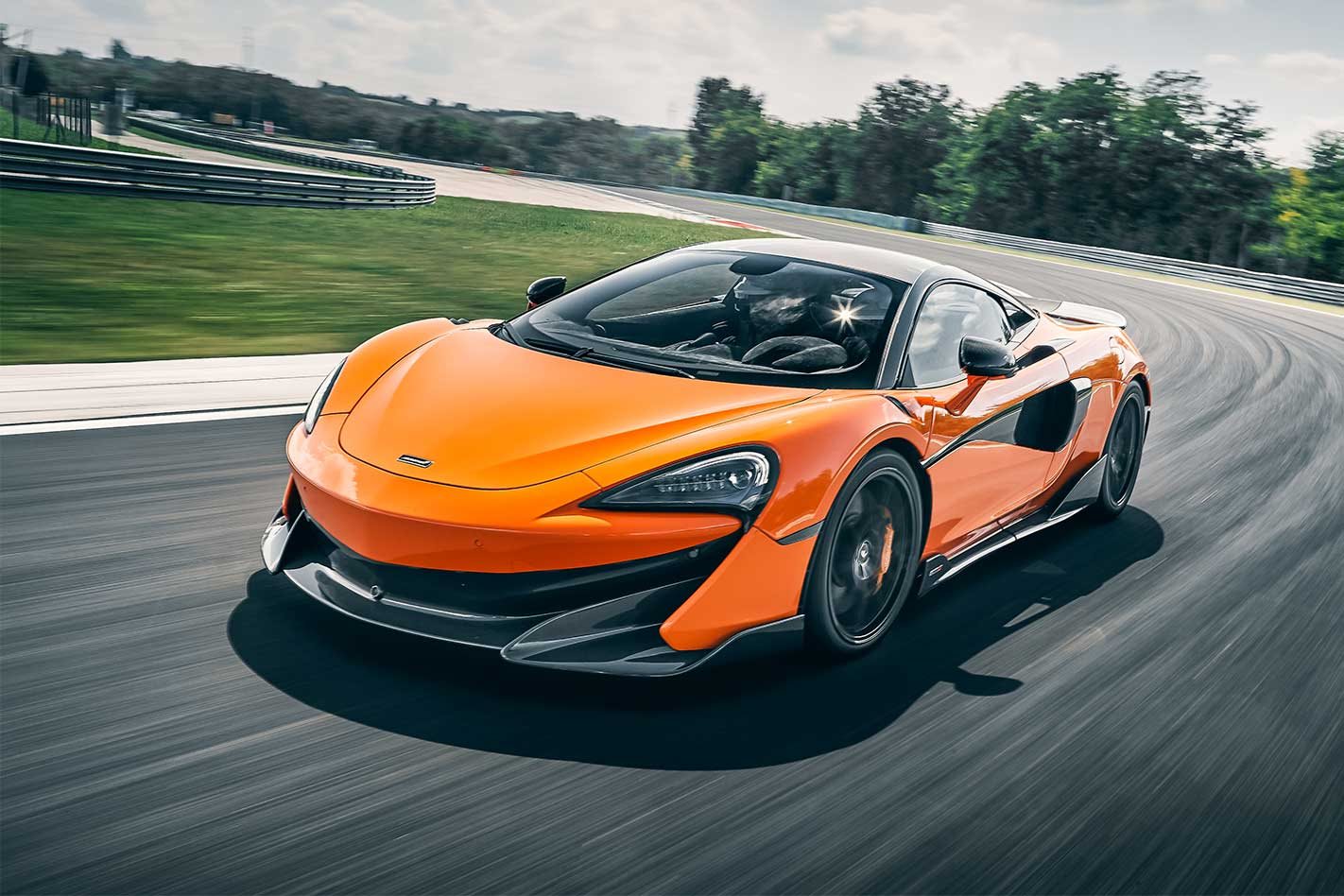Fifty three kilometres… Twelve laps of the Hungaroring in McLaren’s new 600LT. That’s enough to understand that its newest track-focussed car is, indeed, rather more adept at the job it’s designed to do than its 570S relation, which itself isn’t exactly a low bar.
But then it should be better given the 600LT is the first McLaren Sport Series model to get the LT treatment. If you need a reminder what that is, it’s shorthand for Longtail, harking back to McLaren’s iconic F1, and the longer GTR version which was created to keep it competitive at Le Mans.
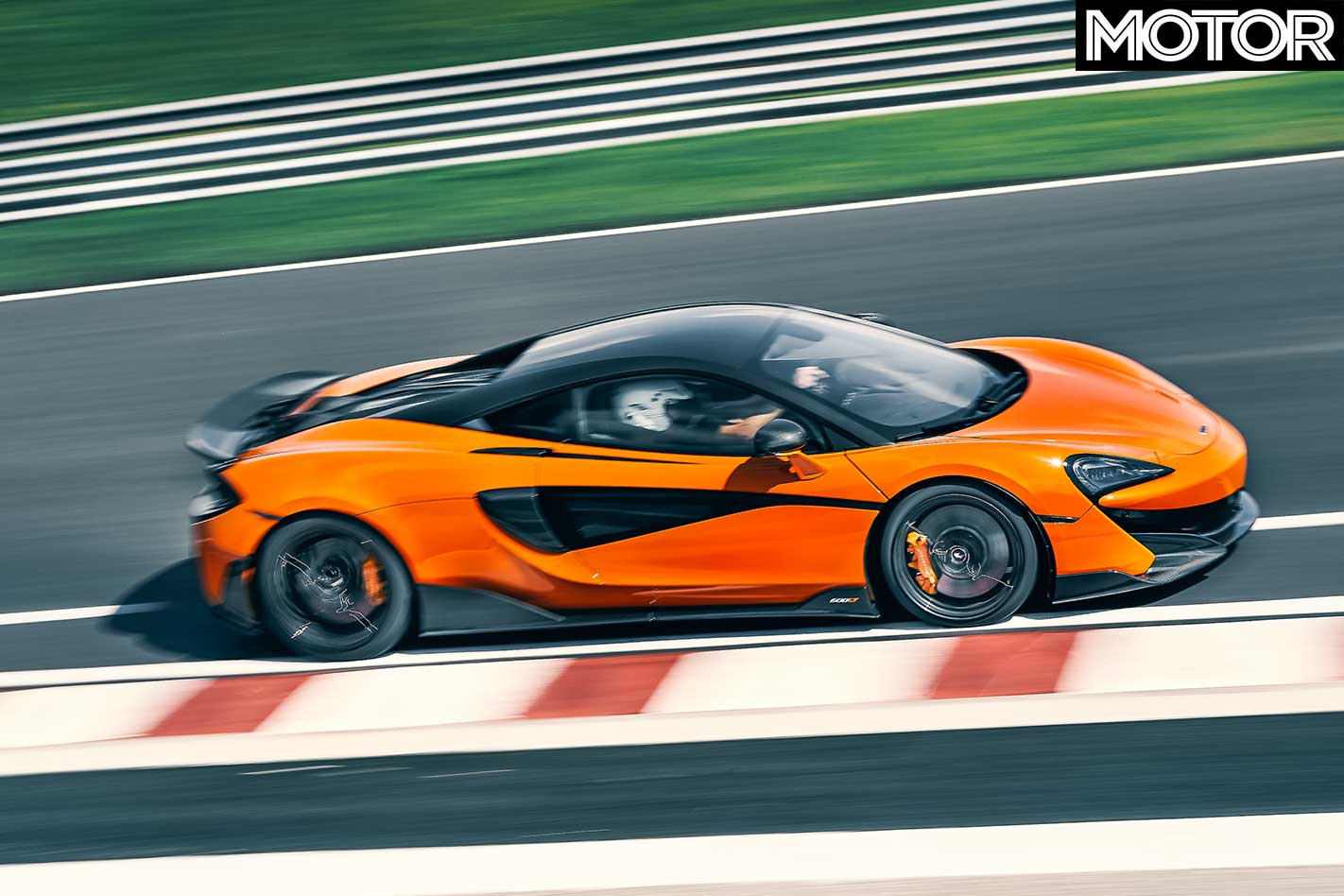
Longer, too, though here we’re only talking 74mm. Long-ness, it seems is relative. Those body revisions do help McLaren achieve its goal of producing downforce, so it’s a credible link.
There’s 100kg of downforce developed at 250km/h where its 570S relation is neutral at the same speed. That is enabled by a combination of the addition of a fixed rear wing and revised front and underside aerodynamics culminating in a sizeable rear diffuser, the 600LT’s revisions also cleaning up how the air travels along its flanks.
Cleaner and more efficient, then, and lighter, too, the 600LT losing 100kg in mass over the 570S for a quoted, lightest, dry weight of 1247kg. To achieve that you’ll need to be fairly masochistic, the full weight loss requiring the deletion of ‘luxuries’ like air-conditioning and audio equipment. That’s a step too far.
Leave them in and your LT will weigh around 85kg less, thanks to a cumulative effect of lighter suspension, brakes, wheels and seats, thinner glass and carpets. The exhaust, too, shortens its path, and reduces mass, by exiting out upwards aft of the engine cover. That it adds some theatrics into the mix at the same time is a welcome by-product, too.
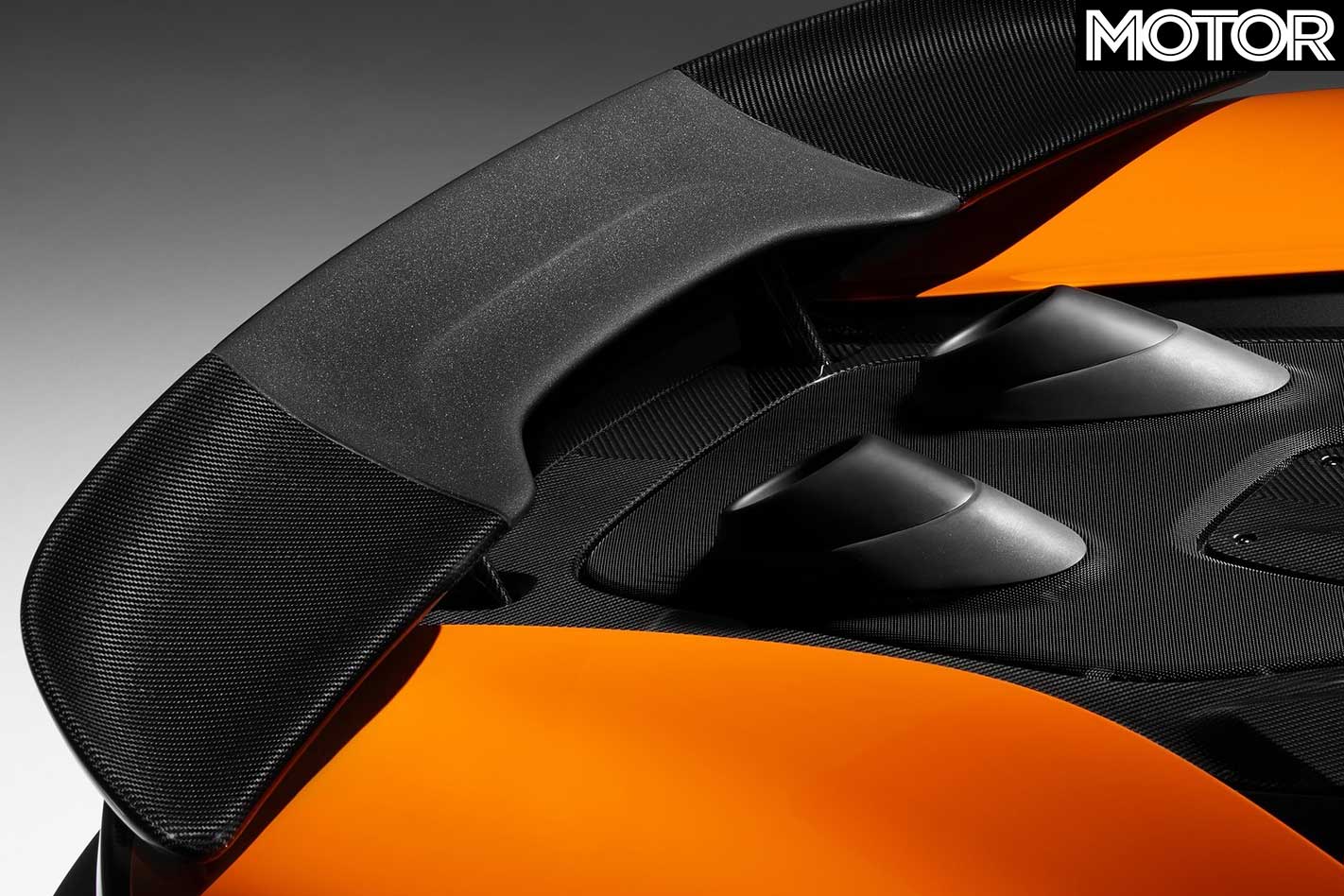
That freer-breathing exhaust, combined with some ECU trickery ups the overall output by 22kW to a total of 441kW. That higher power figure is produced by McLaren’s 3.8-litre twin-turbo V8 when it’s showing 7500rpm on its rev counter, peak torque of 620Nm developed at 5500rpm and hanging around until 6500rpm.
All that drives the rear wheels through a seven speed-SSG paddle-shifted transmission. Hook it up all correctly, or simply use launch control, and you’ll cover the 0-100km/h sprint in 2.9 seconds on your way to the 600LT’s quoted 328km/h maximum. That’s enough to level-peg with its contemporaries in the supercar world and, get this, run away from its iconic F1 relation all the way up to 300km/h, after which the older car gets into its stride and surges ahead to achieve its 386.4km/h party trick.
It’s fast then, as those 12 laps around the Hungaroring demonstrated. But circuits, whatever the thinking behind the 600LT’s revisions, won’t be where it’s used most. No, the LT having to work predominantly as a road car, where those changes could lead to some compromises.

We’ve a day with it, in Palm Springs, the best roads rising out from the golf clubs and gated communities below, winding into the mountains above. As the elevation gains, so too does the scenery, from desert to forest, the tarmac following the topography by meandering up the mountainside.
The surface is the antithesis of a smooth, wide racetrack – it’s imperfect, yet utterly perfect with its undulating, bucking and twisting corners not dictated by a designer, but the landscape. It creates a real challenge for any car, let alone one as overtly focused as the 600LT.
Sitting a third of an inch lower, the 600LT borrows some of its suspension elements from its 720S relation. Lighter, yet stiffer, the front spring stiffness is increased here by 13 per cent, the rear by 34 per cent, the roll bars, too, increasing in stiffness by 50 per cent at the front and 25 per cent at the rear.
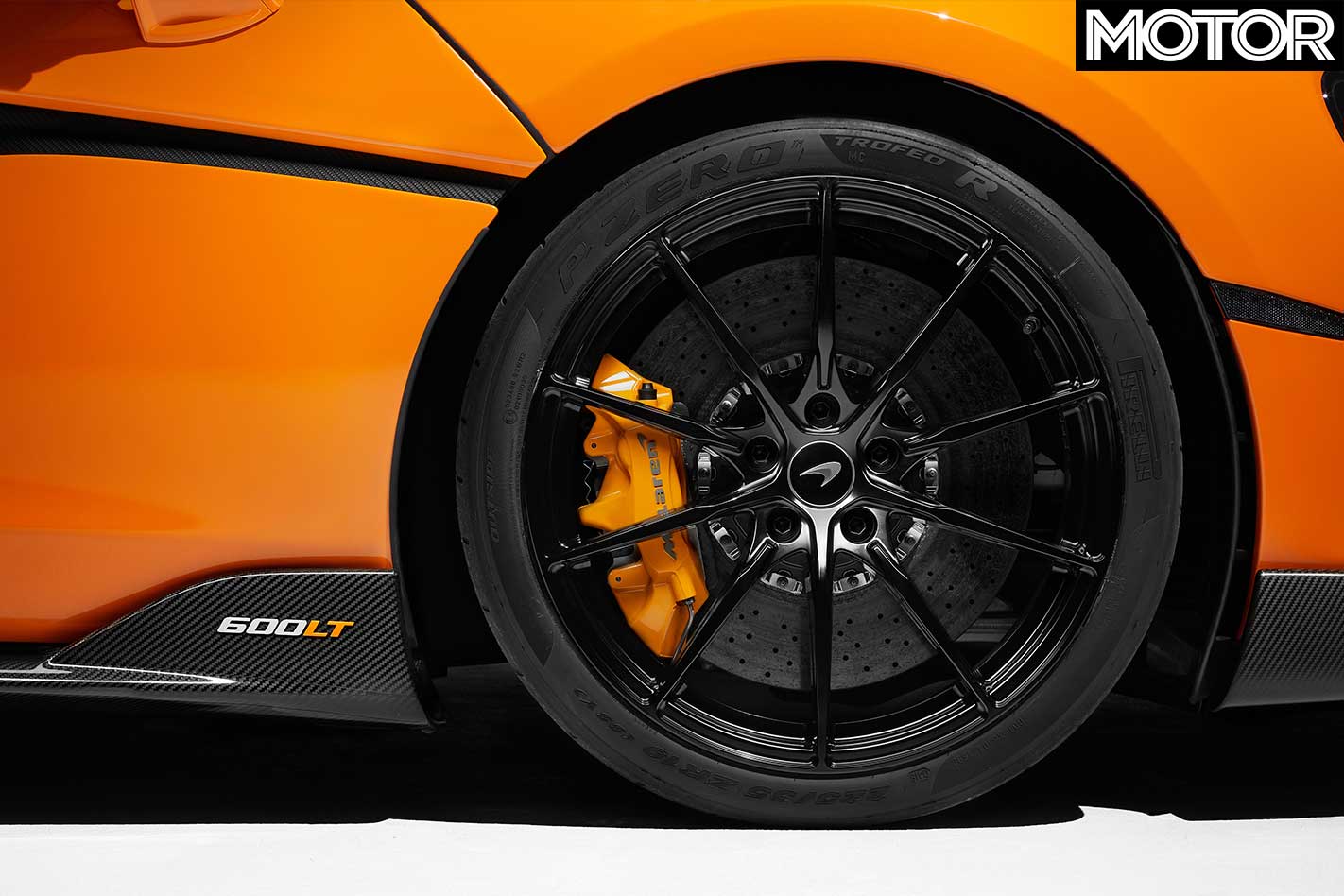
The wheels and tyres attached to that suspension are about 4kg a corner lighter and the carbon ceramic brakes remove a further 1kg a corner. Hence a useful part of the 600LT’s weight loss is where it matters – unsprung.
You feel that in the sophistication of its wheel control, the chassis obviously more taut, but the focus isn’t at the detriment of the ride quality. You quickly learn that ridges and imperfections in the surface don’t result in uncomfortable and unsettling jolts or knocks through the suspension, which hangs off aluminium structures attached to the 600LT’s light and stiff carbon fibre MonoCell II monocoque.
That ability to smother isn’t at the expense of feel. The LT is richer in its information, with greater detail available to you. It manages that clever balance of informing without overloading, that’s instrumental in allowing you to both exploit, and enjoy its heightened agility.

Turning the steering wheel in any McLaren is a reminder why we all hark back to hydraulic power-assisted racks, the Woking firm doggedly hanging onto the technology others have binned in the pursuit of economy. It’s done well to resist the zeitgeist, as the steering is one of the LT’s signatures, the immediacy of the turn in, the faithfulness of the front-axle’s response being key to its increased alertness.
So, too, is McLaren’s tyre choice, the 600LT getting a bespoke developed Pirelli P-Zero Trofeo R tyre, which on the front axle is 225/35 R19 and 285/35 R20 on the rear. It’s a sticky, track-biased tyre, developed specifically to get the best from the LT’s numerous changes over the 570S.
Arriving at a corner, ever faster, you can stand on the brakes. The pedal is firm, but hugely responsive, its immediacy aided in no small degree by a brake booster derived from McLaren’s current Senna flagship. The stopping power is never in question, but the tyre’s ability to convert it, keying to the surface without unsettling squirm or movement is instrumental in the LT’s huge, confidence-giving stability.
Ease off the brake, trailing into a bend and the nose goes exactly where you want it. There’s no slack in the translation from what you’re asking for at the steering wheel to the change of direction at the nose.
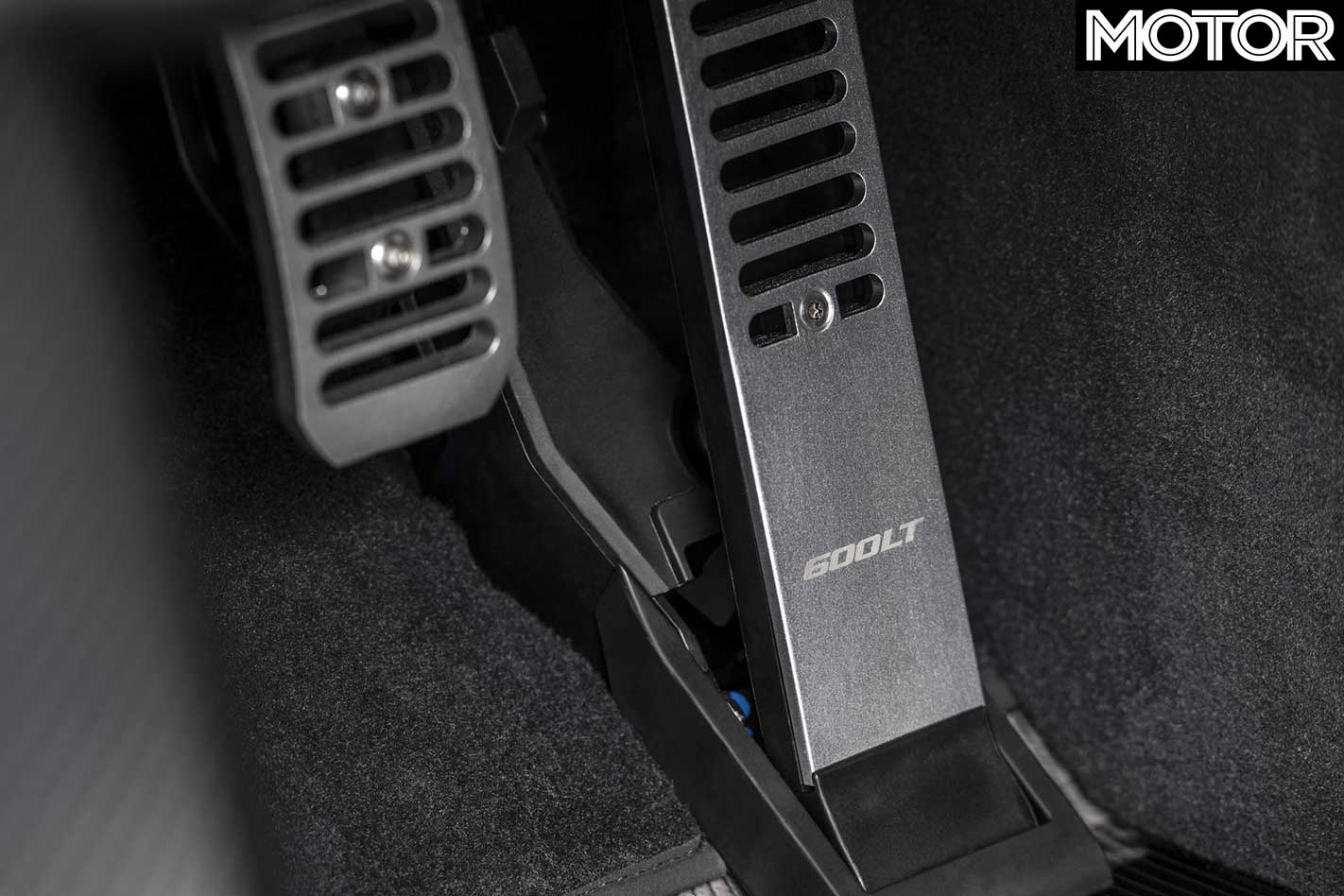
On the tarmac here you’ll not want any of the damper settings selected other than Normal. Pick Sport or Track and the 600LT loses its composure, the dampers’ additional firmness adding unnecessary frequency to the proceedings, unsettling and corrupting, to the detriment not just of comfort, but confidence, and as a result, speed.
That’s true of the transmission, too. Here you’ll want the fastest, though not most aggressive, Track mode. There’s nothing untoward with the shift in Normal, it slipping though the seven gears adeptly.
Track ups the speed, firing through the gears with an intensity that’s more in keeping with the 3.8-litre V8’s ferocious appetite for revs when it’s chasing its redline. Avoid the Sport choice, its inertia push kicking each gear through, McLaren saying some buyers like the abrupt shove it generates, but here, in the LT it simply feels uncouth, at best and, if you’re pulling for a gear as you’re still exiting a bend, it’ll unsettle the car’s otherwise fine balance.

On the road there’s no need to entirely unburden the stability and traction control systems, which in dynamic mode allows the 600LT enough free reign to allow the line to be adjusted by a judicious lift, the LT’s responses such that there’s no reason to fear it moving underneath you. You’ll scarcely need to so high are its thresholds, but on a track it positively encourages you to do so.
Here on the road it’s the precision that defines it, allowing you to pick a line with absolute confidence, the LT’s poise so biddable and easily read to translate to incredible pace. The chassis facilitates that, but the force enabling it is generated by McLaren’s 3.8-litre twin-turbo V8.
McLaren’s V8 has powered every car in one form or another since McLaren Automotive was formed. In the Sports Series models it’s 3.8 litres, swelling to 4.0 litres in the 720S and Senna. Here it doesn’t feel like any poor relation for its lack of 200cc.

Like the suspension, you could read its specification and think it’ll offer compromises, the height of the peak torque up the rev range, the similarly high engine speeds required for maximum power, too.
There’s no denying there’s a duality to it, needing those revs to produce its best, but that’s not to say there’s nothing at lower revs. The chief characteristic is of a rising, frantic urgency as the engine speed rises, the kick and change in intensity above 6000rpm not dissimilar to an old Type-R Honda VTEC when it comes on cam.
That’s to its benefit, the LT as adept in traffic as it is climbing a mountain road, its range expansive, yet there’s real incentive to dig deep and enjoy the heady delights at the top of the rev-counter needle’s sweep. Do that and the pace is ferocious, the engine feeling like it’s got no internal inertia as it chases the last couple of thousand rpm. It’s impossible to resist it whenever there’s space to exploit it.

With that transmission in Track mode, you’ll run a gear lower, just for that addictive, instantaneous response the engine brings. The massive speed is signalled by an exhaust that’s gloriously vocal, its closer proximity to your ear allowing you to enjoy the exotic notes emanating from it that much more.
If you’re in a hurry, it’s dark or you’re in a tunnel, the exhaust doesn’t just deliver sound, but visuals too, with blue burn super-heated gasses evident under heavy throttle loadings, with orange flames joining the pops and crackles on the overrun.
The LT is, by definition, more engaging, more visceral and exciting, yet it achieves that without being mired in any compromise. That is a quite brilliant trick, and one which makes the 600LT not just one of McLaren’s best cars, but arguably its best car. Given they’re currently building the Senna, that might be considered a bold claim, but one that stands up, on road and track.
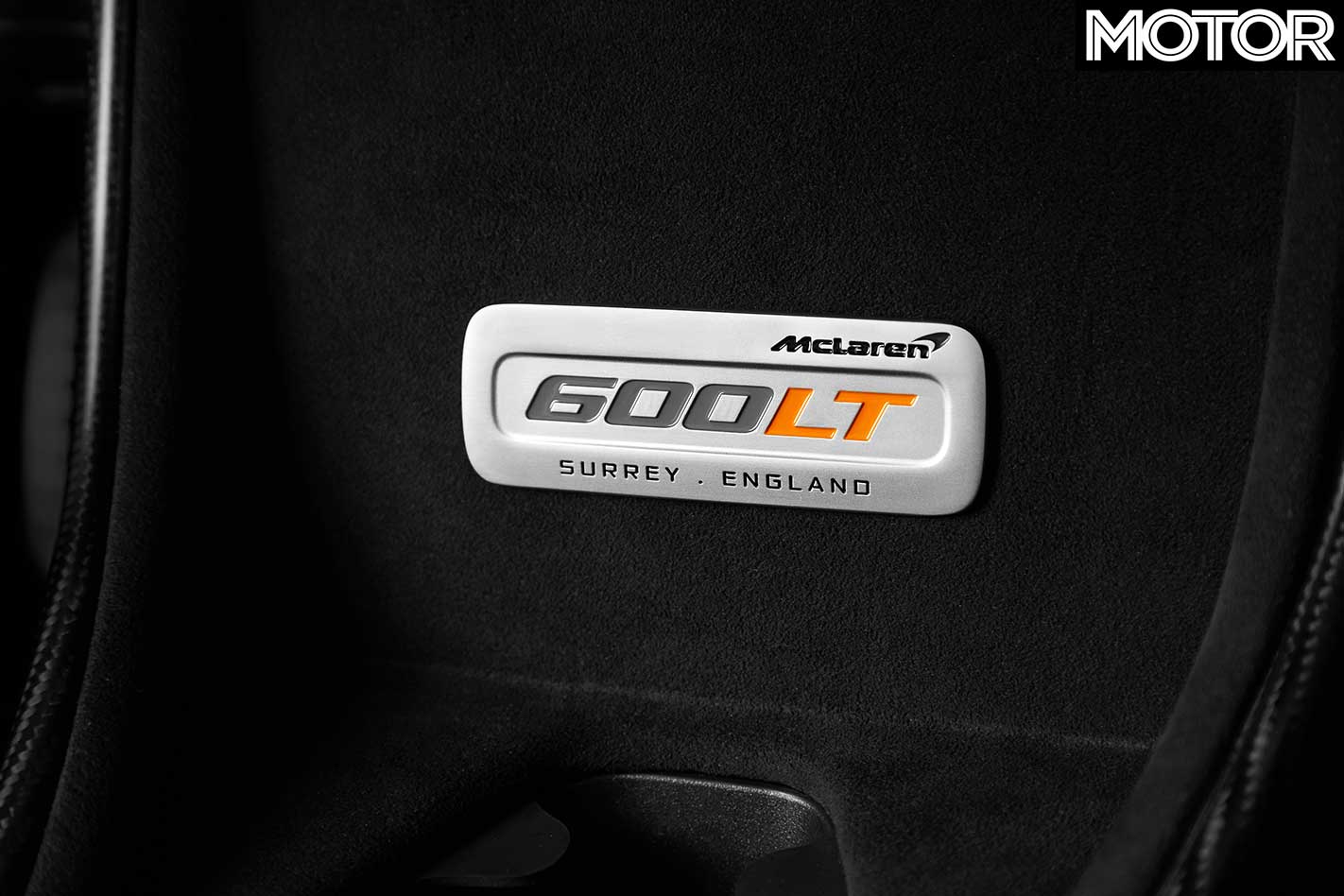
That’s to be applauded, too, as being based on the entry model in the range it’s arguably a ridiculous bargain; insane as that might sound when applied to a car with a sticker price of $455,000. Yes, that is before you’ve started ticking the options boxes, or even more dangerously for your bank account, asking the dream-works MSO operation to get involved and personalise it, but the LT feels worth it.
It’s a more considered, deliberate choice than its lightweight, track-focused rivals like Porsche’s GT3 RS, or regular supercars like a Ferrari 488 – and it loses nothing to them. Trust us, you won’t be disappointed wherever you drive it.
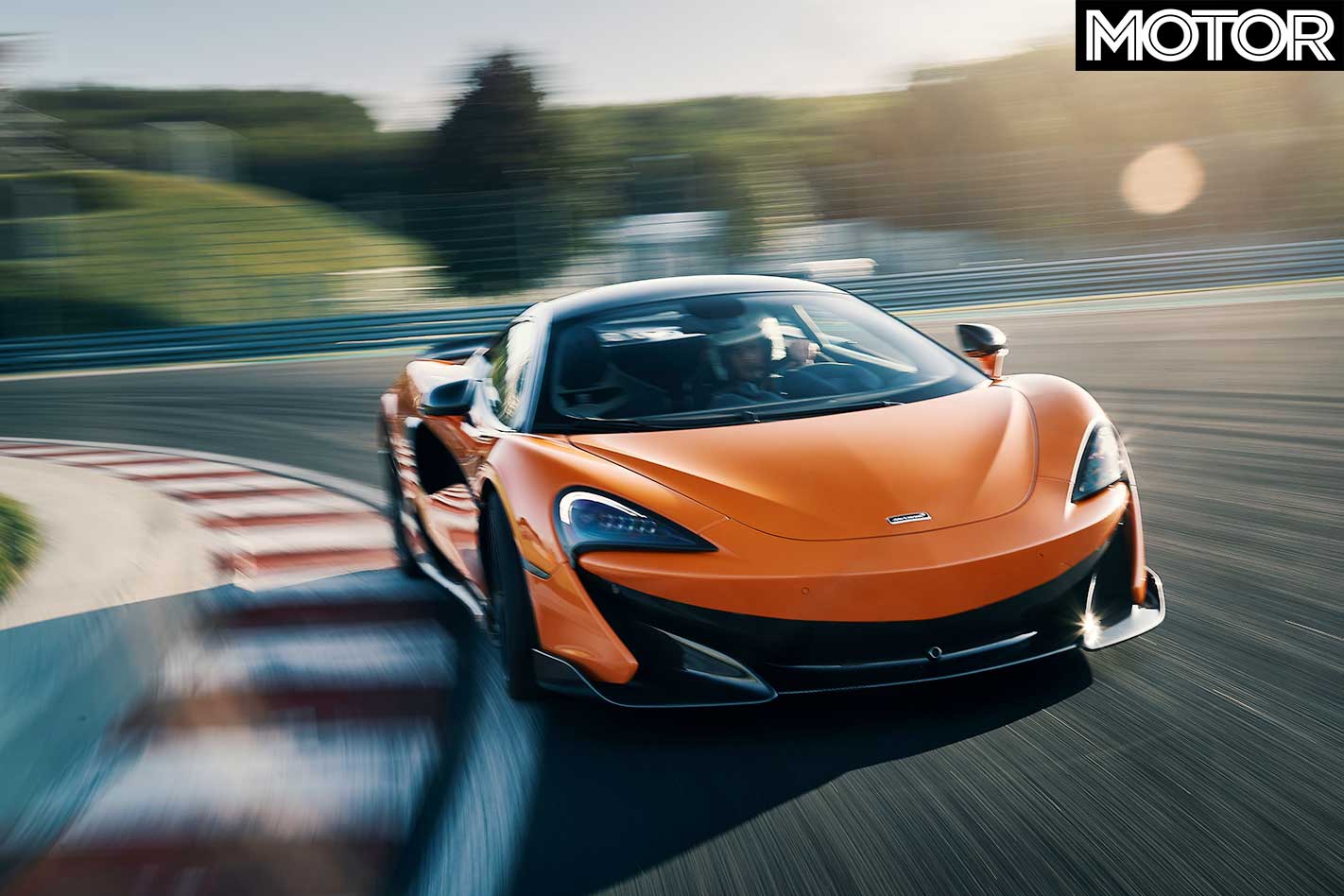
FAST FACTS 2018 McLaren 600LT
BODY: 2-door, 2-seat coupe DRIVE: rear-wheel ENGINE: 3799cc V8, DOHC, 32v, twin-turbo BORE/STROKE: 93.0mm x 69.9mm COMPRESSION: N/A POWER: 441kW @ 6500rpm TORQUE: 620Nm @ 5500-6500rpm WEIGHT: 1247kg (dry) POWER-TO-WEIGHT: 354kW/tonne TRANSMISSION: 7-speed SSG SUSPENSION: double wishbones, coil springs, anti-roll bar (f/r) L/W/h: 4604/1194/1930mm WHEELBASE: 2670mm TRACKS: 1680/1591mm (f/r) STEERING: hydraulically assisted rack-and-pinion BRAKES: 390mm carbon-ceramic discs, 6-piston calipers (f); 380mm carbon-ceramic discs, 4-piston calipers (r) WHEELS: 19.0 x 8.0-inch (f); 20.0 x 11.0-inch (r) TYRES: Pirelli P Zero Trofeo R; 225/35 R19 (f); 285/35 R20 (r) PRICE: $455,000
PROS: Superb drivetrain, chassis and steering; reduced weight CONS: Firm ride in some modes; polarising sound RATING: 5 out of 5 stars
The Nissan connection
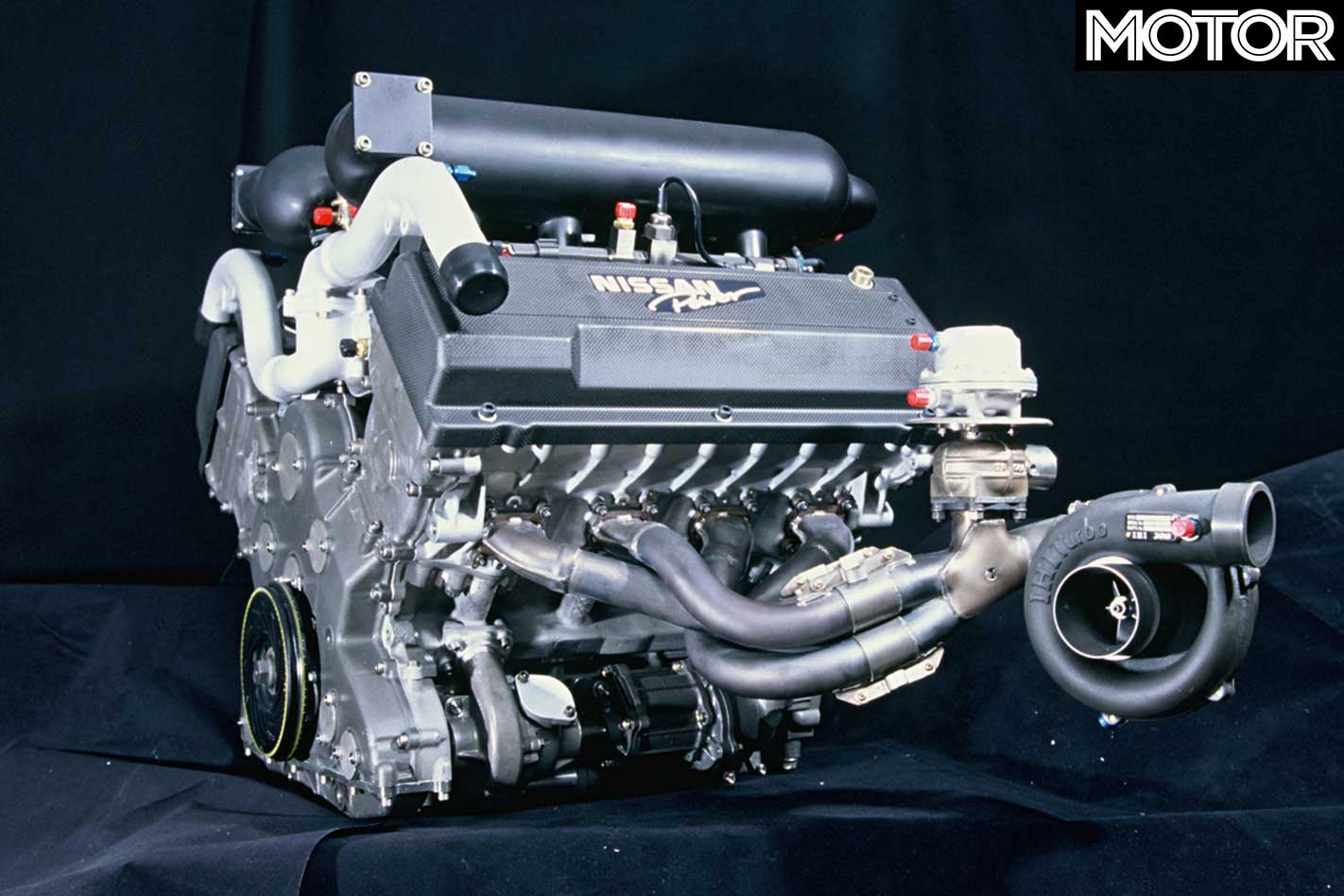
What do modern McLarens have in common with the Nissan R390 Le Mans racer? Their engines. Sort of.
The twin-turbo V8 powering every McLaren on sale today has its roots in this ’90s Nissan racing engine. Known as the VRH35L, the 3.5-litre DOHC twin-turbo V8 was the final step in the VRH lineage and developed by Nissan and Tom Walkinshaw Racing for the R390 GT1. It competed in GT racing and the Le Mans 24 Hour in 1996, ’97 and ’98, but ceased when the R390 adopted LMP rules.
McLaren and Ricardo engineering bought the rights to its design during the MP4-12C’s development, then heavily reworked it into its 3.8-litre M838T form.
Continually evolving since, in 4.0-litre guise in the Senna makes an insane 588kW/800Nm. The VRH35L made “over” 478kW/706Nm in race trim, according to Nissan.
The first Longtail road car

The history of the ‘LT’ moniker stretches back to McLaren’s most iconic road car, the F1.
After winning the Le Mans 24 Hour endurance race outright in GTR form in 1995, it was lightened and powered up in 1997 to fight upgraded competition. The rear-end was also extended to improve high-speed downforce, earning it the famous Longtail name.
Rules said a road version was needed to pass homologation, so the F1 GT was then born. It was 600mm longer than the standard F1, 101mm wider and used special dampers to handle extra downforce. It used the same 6.1-litre V12 powertrain, with 461kW/650Nm, but sucked air from a larger roof mounted snorkel.

Other unique details included a wider exhaust tip arrangement, huge front splitter, revised front bumper and louvred vents in the front guards.
Three cars were built while the original prototype, named the ‘XP GT’ and finished ‘Bottle Green’, is kept by McLaren in Woking. McLaren says the two others remain in private collections.

